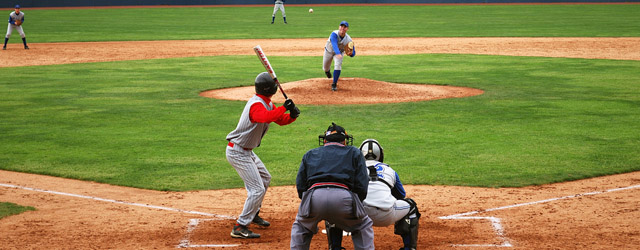
If you want to be a successful pitcher, you need to learn to locate your fastball in and out of the strike zone. That is the first and most important thing you can learn to accomplish.
The fastball is thrown more than any other pitch in baseball. As a pitcher, you should acknowledge this fact and understand that you will throw your fastball more than any other pitch in your arsenal. There is no need to worry about developing a breaking pitch until you can throw your fastball inside, outside, up in the zone, and down in the zone. Why is this so important? Because without command of your fastball, you do not have command of the strike zone.
It may seem obvious that you need to command the strike zone, but many young pitchers have no idea how to hit a spot. Of course they know where the strike zone is (somewhere over the plate, right?), but they do not have the ability to throw their fastball to a particular spot.
Expanding the Strike Zone
First and foremost, commanding the strike zone does not mean throwing every pitch for a strike. Having command means being able to throw your fastball with purpose, including out of the zone. As a pitcher, you need to attack the strike zone early in the game so opposing hitters know you can throw strikes. However, living low and on the outside corner the whole game makes you one dimensional. Good hitters will pick up on this and make the necessary adjustments to look for their pitch on the outer half of the plate. In the hitter’s mind, the strike zone is small and he only needs to worry about covering that small area of the plate.
To become a better pitcher, you need to move your fastball around the strike zone. Mixing up location inside and outside can make a hitter second guess where the next pitch will be located. Now add in high fastballs and low fastballs, and the hitter has to prepare for different swing planes as well. This is how you expand the hitter’s strike zone and make him cover a larger area with his bat.
Extending the Umpire’s Strike Zone
A good pitcher will also try to expand the umpire’s strike zone too. Wait. What? Isn’t the umpire’s strike zone pretty much set in stone? If you are in command of your fastball and hitting your catcher’s target consistently, you can effectively make the umpire give you more strike calls.
When you are more consistent with your pitches in the zone, the umpire gets into a nice rhythm of calling pitches for strikes. He knows that you can hit the catcher’s mitt at will and becomes comfortable that you are a good pitcher and not just a thrower. As the game progresses, you can begin to paint the corners more and eventually “convince” the umpire to give you an extra inch or two on the black part of the plate. (This is especially true for youth and high school baseball umpires who are a little less experienced.) In essence, your pitches are telling the umpire where the zone is every time you hit your catcher’s target. And let’s be honest, a bigger strike zone always puts a smile on a pitcher’s face.
Effective Velocity
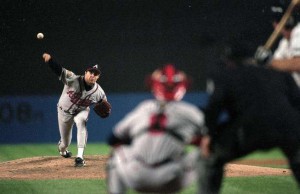 The ability to move your fastball in both the horizontal plane and vertical plane causes the hitter to change his own plane of vision. The same fastball thrown in different locations can appear to come in at different speeds. Fastballs that are thrown inside and/or up in the zone will appear faster to the hitter, while pitches outside and/or down in the zone will appear slower. This is called effective velocity and it requires the hitter to react faster to pitches that are up and in compared to pitches that are down and away. Just as a change-up is meant to throw off the timing of a hitter, throwing your fastball to various locations can also wreck havoc on an opposing hitter’s timing. “As the locations change throughout the strike zone, hitters either need to speed up or slow down their mechanics in order to achieve [perfect contact].”1 Remember, good pitching is about upsetting the hitter’s timing.
The ability to move your fastball in both the horizontal plane and vertical plane causes the hitter to change his own plane of vision. The same fastball thrown in different locations can appear to come in at different speeds. Fastballs that are thrown inside and/or up in the zone will appear faster to the hitter, while pitches outside and/or down in the zone will appear slower. This is called effective velocity and it requires the hitter to react faster to pitches that are up and in compared to pitches that are down and away. Just as a change-up is meant to throw off the timing of a hitter, throwing your fastball to various locations can also wreck havoc on an opposing hitter’s timing. “As the locations change throughout the strike zone, hitters either need to speed up or slow down their mechanics in order to achieve [perfect contact].”1 Remember, good pitching is about upsetting the hitter’s timing.
Just imagine living on the outside corner with your fastball and getting consistent strikes. Good hitters will eventually begin to time the pitch (and location), and that’s when you come inside with the same fastball and it’s as though they cannot catch up to it. Think Greg Maddux.
Setting Up Other Pitches
Once you establish that you can throw your fastball anywhere you want, you now have the ability to make your other pitches more effective too.
If a hitter knows that he has to cover a larger strike zone, chances are he is a little more uncomfortable in the batter’s box. And that’s just when he is trying to hit your fastball. Mix in a breaking ball or change-up, and now he has to contend not only with locational differences, but velocity changes and movement. Not fun – at least for the batter.
Your success as a pitcher will depend heavily upon your ability to locate your fastball early and often. Again, it does not always have to be a strike for it to be effective. Look to change the hitter’s plane of vision, expand the zone he must cover with the bat, and set up your other pitches by commanding your fastball in, out, up, and down.
What do you think? Can a pitcher be effective without locating his fastball to different parts of the zone? Let me know your thoughts in the comments below.
——
References: 1. Seidman, Eric. “Checking the Numbers: Location and Perception” Baseball Prospectus. Web.
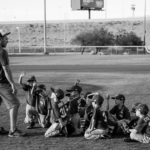
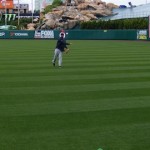
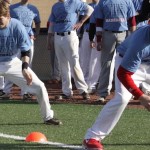
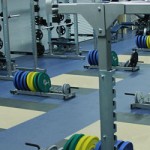

One response to “Learn to Locate Your Fastball First”
[…] Have a Purpose! – What is the goal of the bullpen? Are we focusing on throwing the fastball to spots? Are we trying to improve the change? Are we getting the fastball on the knees? Are we trying to […]